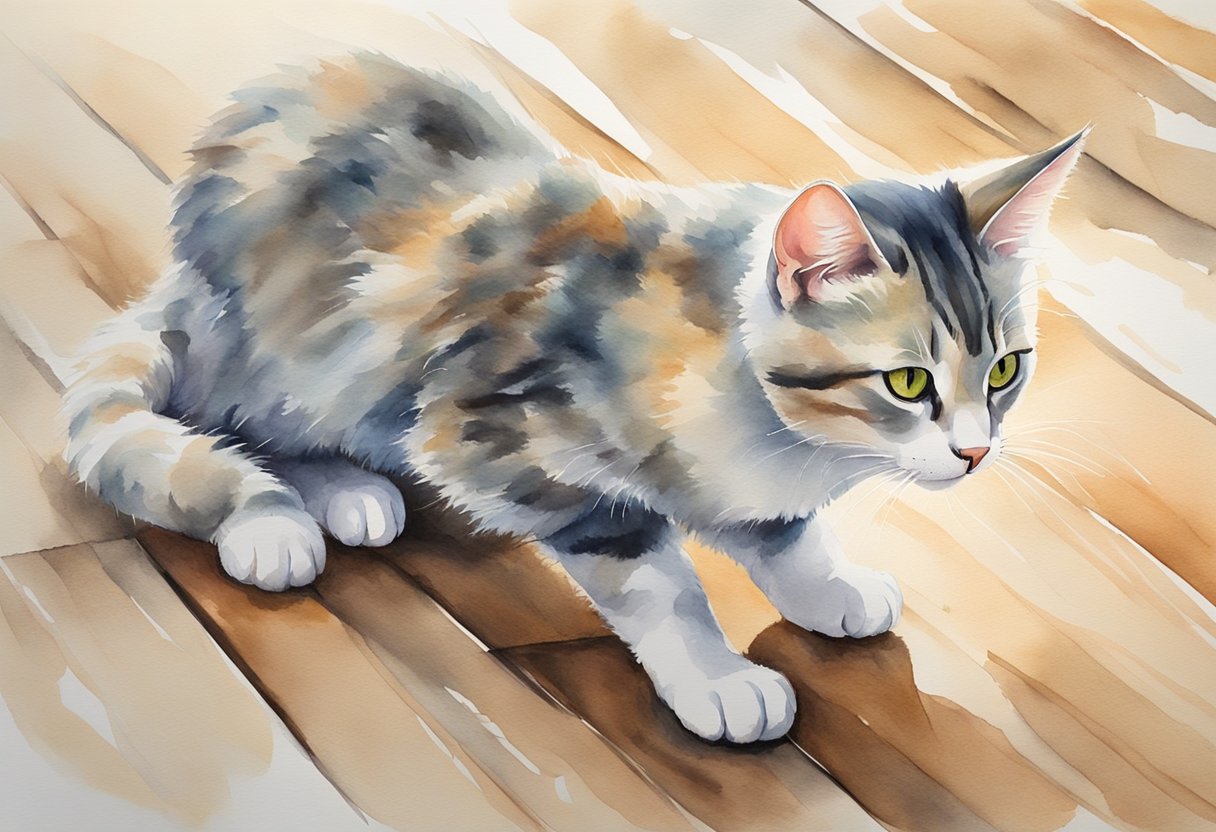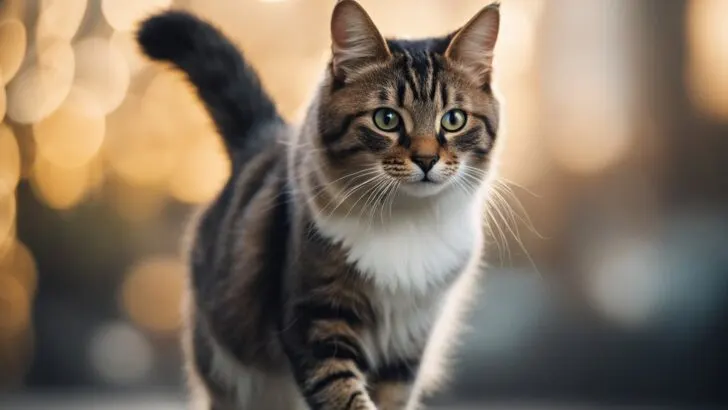Cats walk so quietly thanks to their unique physical attributes and walking patterns. When your cat prowls through the house, you might not hear a thing, and that’s because they have a specialized walking technique known as the “four-beat gait.”
This means that each paw contacts the ground at separate times, and there’s always more than one paw touching the ground, which enhances stability and quietness. Moreover, the soft pads beneath their paws absorb the impact of each step, allowing them to move silently.

Their stealthy movement is further aided by the fact that cats are digitigrade walkers; they walk on their toes. This posture not only contributes to their silent gait but also allows for more efficient and controlled movements.
Imagine the way your cat seems to glide across the room – that’s them keeping their body low and making delicate, controlled steps to minimize noise. This is particularly crucial when they are stalking prey or sneaking up on an unsuspecting toy, demonstrating how their silent steps are a natural part of their predatory behavior.
Observing cats can teach you a lot about the art of stealthy movement. Their ability to sneak up on their prey—or your unsuspecting feet under the blankets—relies on their precise and calculated motions. As a cat owner, you might have noticed that even at their most playful or cautious, there’s a certain grace to their movements.
Anatomy of the Quiet Walk

Cats are renowned for their silent approach, a trait crucial to their success as predators. This ability is a result of various anatomical features designed to enhance stealth in their natural behaviors.
Paws and Claws
The unique structure of your cat’s paws is pivotal to their quiet movement. The soft pads on their feet absorb sound, allowing them to tread lightly. Furthermore, retractable claws keep sharp claws hidden until needed, preventing unnecessary noise and providing excellent traction during a chase.
- Paw Pads: Elastic cushioning for silent movement
- Retractable Claws: Kept sheathed to avoid unwanted noise
Legs and Spine
Your cat’s leg bones and flexible spine work together to facilitate stealthy locomotion. The digitigrade stance—walking on toes—elevates the stealth factor, aiding in the efficient and silent approach.
- Hind and Front Legs: Enable agile and fluid motions
- Flexible Spine: Assists in balancing and making tight turns
Musculature and Form
The muscles in a cat’s body are tuned for both explosive power and delicate precision. This muscular arrangement, along with a sleek form, allows for calculated movement that minimizes sound and conserves energy.
- Strong Muscles: Provide agility without excess bulk
- Streamlined Form: Enhances efficiency in movement
Special Adaptations
The gait known as ‘direct registering’ is when a cat places the hind paw exactly in the spot where the corresponding front paw stepped, greatly reducing noise and tracks. This technique, coupled with predatory instincts, underpins the silent tread that makes cats such successful hunters.
- Direct Registering: Hind paws step into the front paws’ prints
- Predatory Instincts: Drive the development of silent stalking adaptations
Behavioral Patterns in Silent Movement
Cats are renowned for their stealthy movement, which plays a crucial role in their survival and communication. Understanding how they manage such quiet locomotion requires examining their behavioral patterns closely.
Hunting and Stalking
When your cat is on the prowl, every movement is calculated. They engage in a low-to-ground position and advance slowly, utilizing a four-beat gait where each paw contacts the ground independently to minimize noise.
This careful placement of paws helps your cat sneak up on prey without alerting it. Their agility also allows for sudden bursts of speed or changes in direction during the chase.
Types of Gaits
Cats have various gaits that contribute to their silent moves:
- Walk: A standard four-beat sequence where they can walk silently.
- Trot: A two-beat gait, less stealthy but still quiet.
- Canter: A three-beat gait used for quicker pacing.
- Gallop: The fastest but the noisiest gait, often ending with all paws on the ground.
Communication and Interaction
Subtle body language and movement are vital for non-verbal communication with other cats or creatures. They might tread lightly or freeze in place to convey a message or assess a situation, carefully managing their energy and behavior to avoid unnecessary sound.
Health and Mobility Issues
Any changes in your cat’s movement, such as limping or reluctance to run, could indicate pain or arthritis. Regular observation can help detect health issues early, ensuring a quiet stride doesn’t turn into a pained one.
Influence of Breed on Movement
Your cat’s breed might influence how they move. Bengal cats are known for their exceptional stealth, similar to their big cat ancestors, while Siamese cats often display a higher pace and agility. These breed-specific traits contribute to the nuances of quiet movement.

My name is James, and welcome to FAQCats!
Along with our team of cat owners, expert pet enthusiasts, and pet professionals, we aim to write engaging helpful, engaging content about cats. At FAQCats we strive to provide content that’s accurate and fun to read. Our team writes about everything related to cats; even the most complex of topics. Through extensive research and caring for our own fur-pals, we’re able to provide something cat owners worldwide will love. Have a look around, and leave us feedback anytime!

